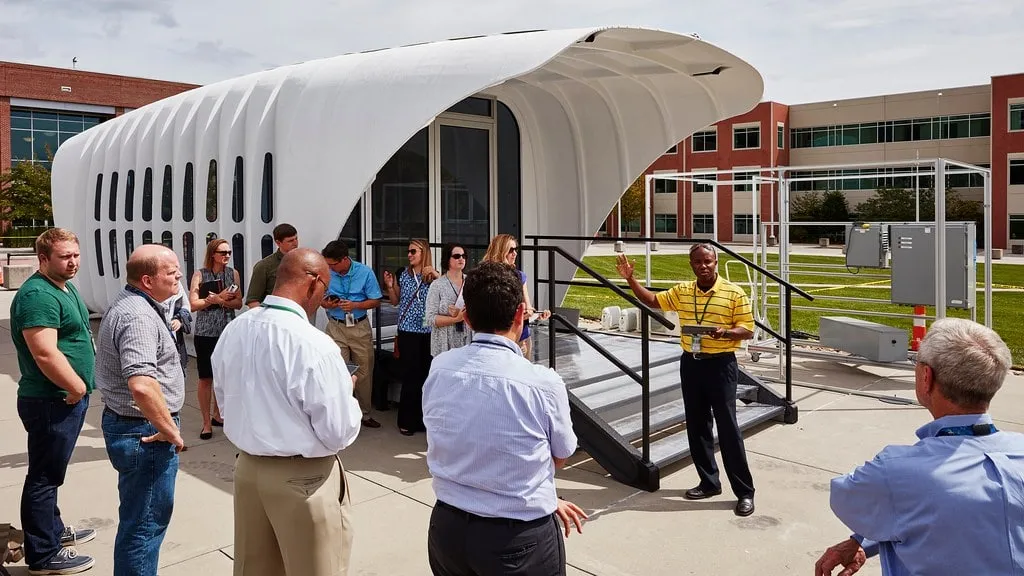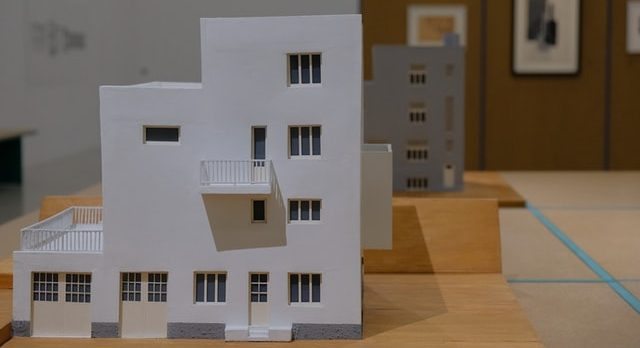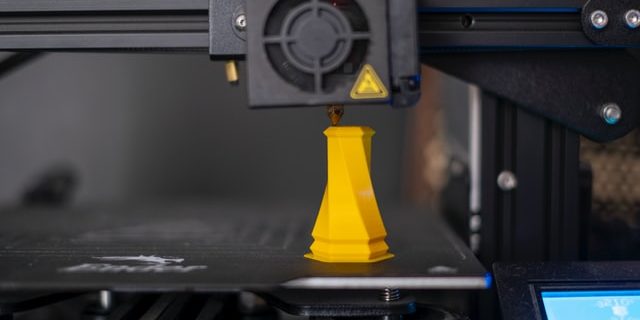Have you ever wondered how businesses within the construction industry make use of 3D printing? More and more construction industry businesses are turning to 3D printing to enhance the level of efficiency and quality of projects – however, this offers both benefits and drawbacks, which are well worth considering. Luckily, with this in mind, we have outlined some of the first things you should know about when considering to utilize 3D printing technology in construction. Plus, we’ll also examine what this means for different construction stakeholders involved in the process.
How is 3D Printing Used in Construction?
3D printing in construction is used to create models quickly, create materials on-site, create specific elements on-demand, and even produce buildings fully automated.

“The AMIE 3D-printed house at ORNL” by oakridgelabnews is marked with CC BY 2.0.
4 Use-Cases of 3D Printing in Construction
3D printing is an incredibly innovative technology. What’s more, 3D printing – whether in the construction industry or outside of it – is something that was once constrained to the realms of science fiction only. However, while the concept of printing an object was once something that seemed impossible, it’s now very much a reality – and is transforming the way that we work.
So, how is 3D printing used in the construction industry at present? There are several different ways that the construction industry makes the most of 3D printing, including the following points.
1 | Allows Architects to Quickly Model a Project
The first use of 3D printing in the construction industry starts before the project has entirely begun: during the concept development phase. Indeed, in a growing number of cases, professional architects are using 3D printing to create a quick and accurate model of a potential project before it’s officially undertaken.
This offers a simple and reliable way for planners to determine the potential suitability of a project. Moreover, this helps ensure that the most appropriate design choices and structural decisions are taken during the concept development stage of a construction project.
2 | Creation of Materials On-Site
Let’s suppose that you have very specific types of material requirements for a moment. For example, perhaps as part of your construction design, you have been planning to include an archway – and this requires bricks of a very particular shape.
This can represent numerous challenges when it comes to ordering the materials you need, but with 3D printing in the construction industry, the process is made much simpler. Architects and designers can simply print the size, shape, and design of bricks they require (in this instance) from the most relevant material, thereby accurately meeting the project requirements.
3 | On-Demand Printing
A further application of 3D printing in construction projects is the potential to print materials and resources on-demand. Indeed, in most traditional construction projects, buying in bulk at the start of the project is necessary to keep costs down and ensure the supply of materials to complete the building project. There’s nothing more frustrating, after all, than being unable to source materials needed for a construction project – delaying progress on the project, putting costs up, and leading to a much more disorganized working environment.
However, this strategy can naturally present numerous challenges, since a “just in time” model is often more practical for project managers. Luckily, 3D printing can potentially provide an alternative to this challenge, allowing projects to run smoothly without such extensive worries about sourcing materials.
4 | Fully Automated Building Projects
Did you know that, with modern 3D printing technologies in construction, it’s actually possible to build a complete house, fully automated? This was a concept that the team at WinSun Design and Engineering demonstrated from Shanghai, who were able to construct conceptual houses in less than 24 hours using 3D printing technologies. This was also something being investigated by a Dutch project, offering incredibly valuable potential opportunities.
As such, their success goes to prove that 3D printing an entire property is potentially possible – and may play a massive role in the future of 3D printing overall.

The Benefits and Drawbacks of 3D Printing
At this point, we’ve considered some of the potential applications for 3D printing technology in the construction industry – but how can you make the most of this strategy? With a growing number of construction projects implementing 3D printing in some form or other, it’s definitely clear that this could revolutionize the way we build properties, although not necessarily always for the better (depending on who you ask).
Advantages of 3D Printing
There are countless reasons why 3D printing could offer an excellent opportunity in construction projects. Of course, we perhaps can’t go into all of these today; however, we have summarized a few of the most notable benefits of 3D printing as follows to help you find the strategy that’s right for your needs.
Reducing Time
First, there’s the time factor. 3D printing can be much more efficient than traditional construction, which could enable properties to be created considerably more quickly. In turn, this could make it possible for new housing to be built almost on-demand, rather than there being a housing shortage.
Fewer Mistakes
Secondly, it’s worth considering that 3D printing is almost error-free compared to human labour. While we’re not saying that 3D printers can’t malfunction (they absolutely can), 3D printed materials are often effective for cutting out risks of human error and delivering higher-quality, more consistent finishes on properties overall.
Cutting Out Waste
And, in a world that’s ever-more focused on the environmental impacts of our actions, the role of 3D printing for cutting out wastage is also massive. Since 3D printers and machines use the bare minimum of materials, it’s much easier for these systems to cut back on waste. This is enhanced by their greater accuracy, which helps prevent materials from being wasted due to human error and accidents. As such, it can be said that 3D printing in construction is far more efficient from a materials usage perspective, and this could cut the overall environmental impact of property building and mining for materials such as sand and aggregates.
Disadvantages of 3D Printing
There are clearly a lot of reasons to benefit from 3D printing in construction. However, there are also a few significant drawbacks that we would be remiss not to mention.
Specialized & Expensive Equipment
Perhaps the most obvious drawback of 3D printing in the construction industry is the specialized equipment it requires. Indeed, a private buyer can pick up their very own 3D printer for a surprisingly affordable price these days. However, a 3D printer capable of producing specific materials such as concrete and the like is massively more expensive, which may make this an unfeasible option for small and mid-scale construction projects.
Speaking of costs, it’s worth considering that – while 3D printed houses may be cheaper to produce due to their greater speed – the consumer may not necessarily see much of this saving. As such, from the perspective of the population, 3D printed houses may represent a great profit margin for developers with little benefit for the house buyer. Still, since the market is driven by competition, we’d be optimistic that 3D printing technologies would begin to influence the house price to make a property more affordable to buy.
Trust from Customers
There’s a lot of distrust regarding the concept of 3D-printed houses these days. While 3D printing could technically eliminate human error, many people are concerned about the safety of trusting a machine to build a house. As such, this may be a limitation the construction industry has to tackle if it’s to implement 3D printing on a broader scale.
Unemployment
As a final point of note, it’s worth considering that the rise of 3D printing in construction may contribute to greater unemployment overall. With 3D printers taking over the roles of some, if not most, workers on the construction site, many construction industry staff members could end up out of their job. Naturally, this can play a very significant impact on the wealth and prosperity of regions overall and could lead to more people out of work at any one time.

Current Trends with 3D Printing
3D printing is still a relatively new technology – however, it has made leaps and bounds over the past decade. With this in mind, it’s now easier than ever before to use 3D printing in construction projects. And this is likely a trend that will continue to grow, with more and more construction projects relying on 3D printed materials as we look to the future.
This strategy would help support the affordability of construction, potentially making housing more affordable for buyers in the long-term perspective. And while it’s likely a long way off, for now, several brands and teams have already proven the potential to build entire homes with automated 3D printing technologies; as such, this could absolutely be something to consider when looking into the current and future trends with 3D printing in the construction industry.
Conclusion
If you have been looking to learn more about 3D printing within the construction industry, we hope that today’s guide may have helped. Indeed, in many cases, 3D printing is transforming the way that we tackle countless different projects, and this is equally true for businesses within the construction industry as well. As such, this may be worth considering for your own construction goals, too – and, of course, 3D printing in construction is something that’s likely to continue growing as we look to the future.
If you want to learn more about PropTech, commercial real estate, smart buildings, and sustainability, feel free to take a look at our other blog articles.
